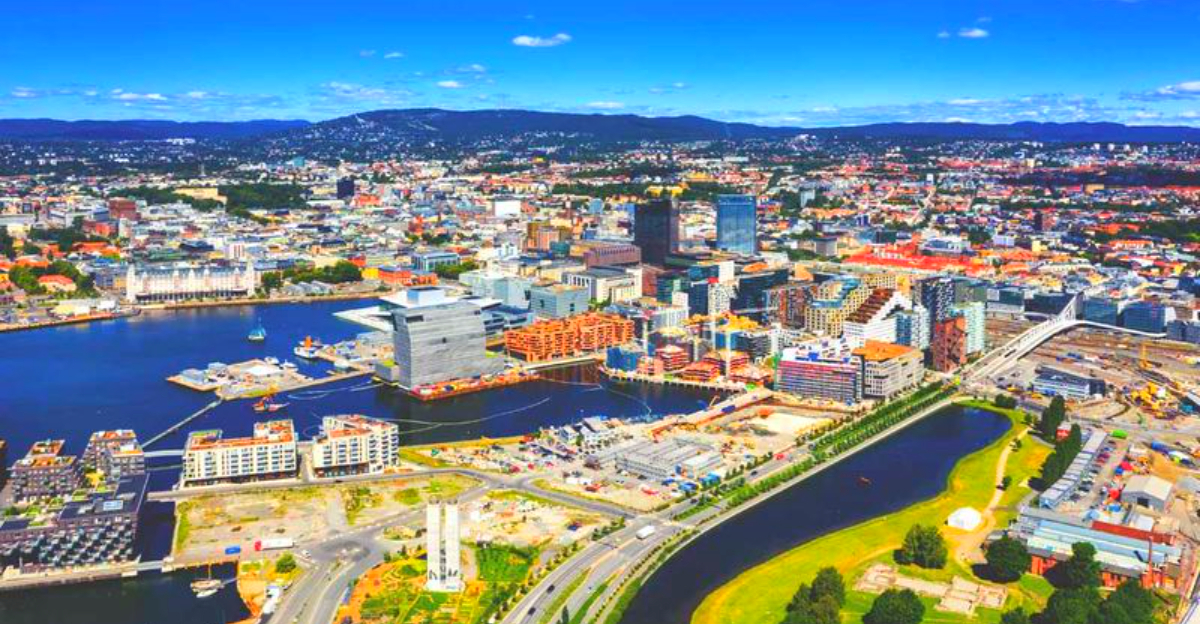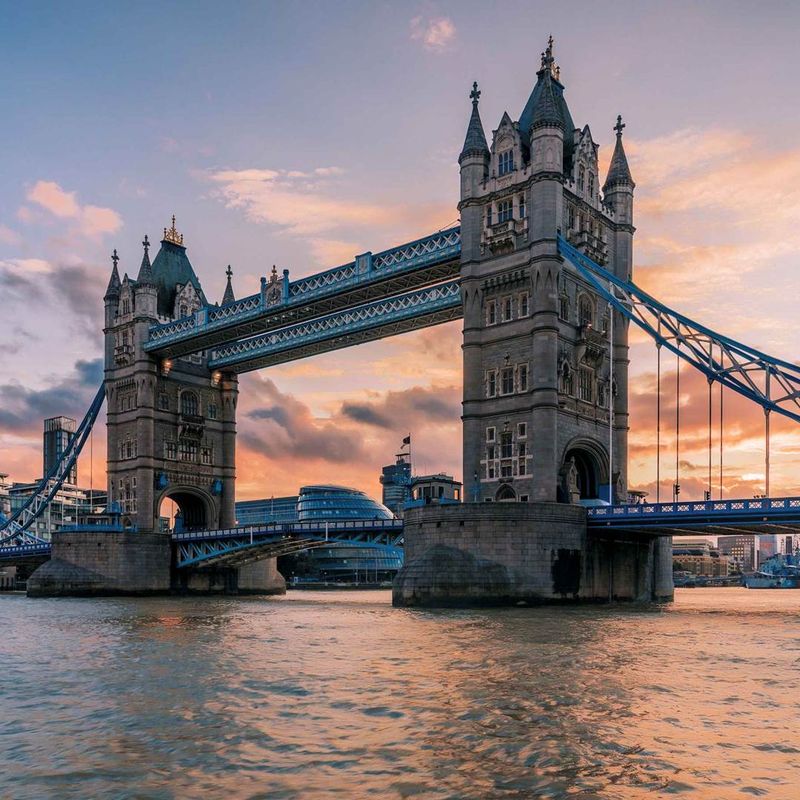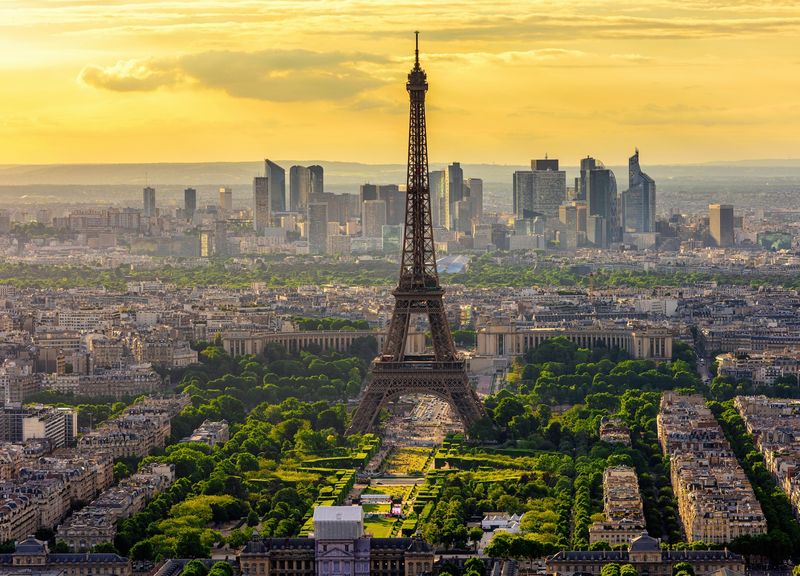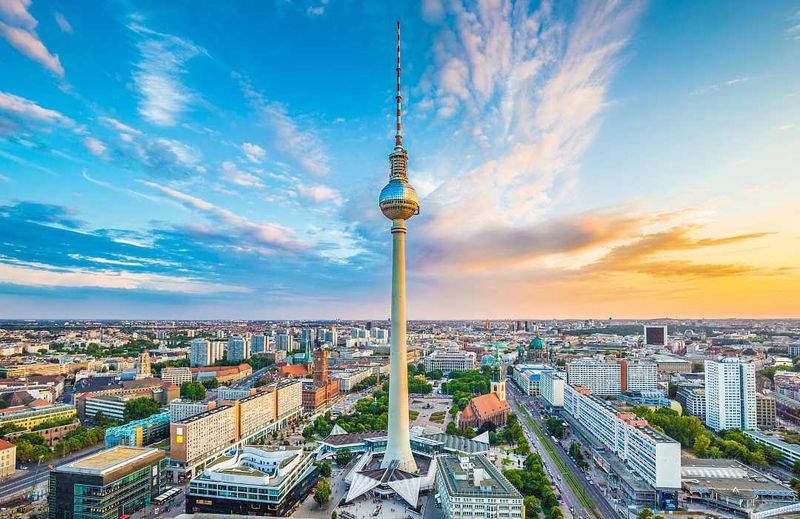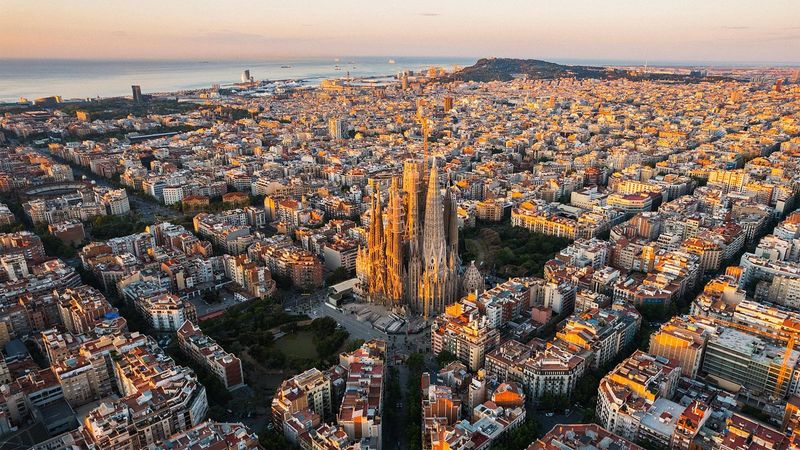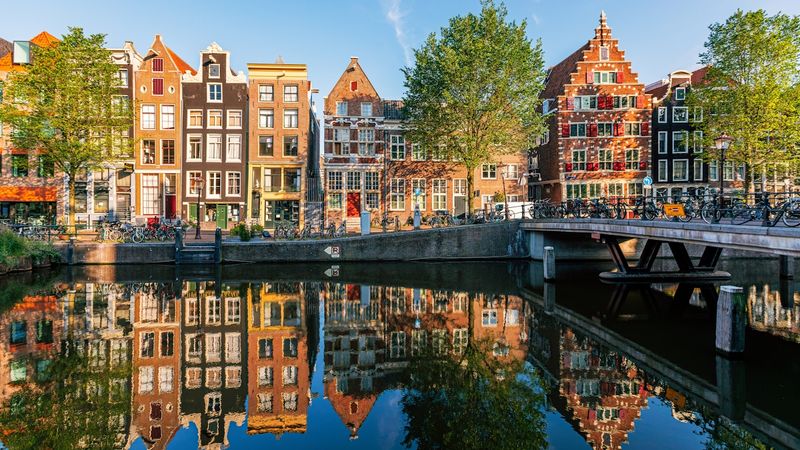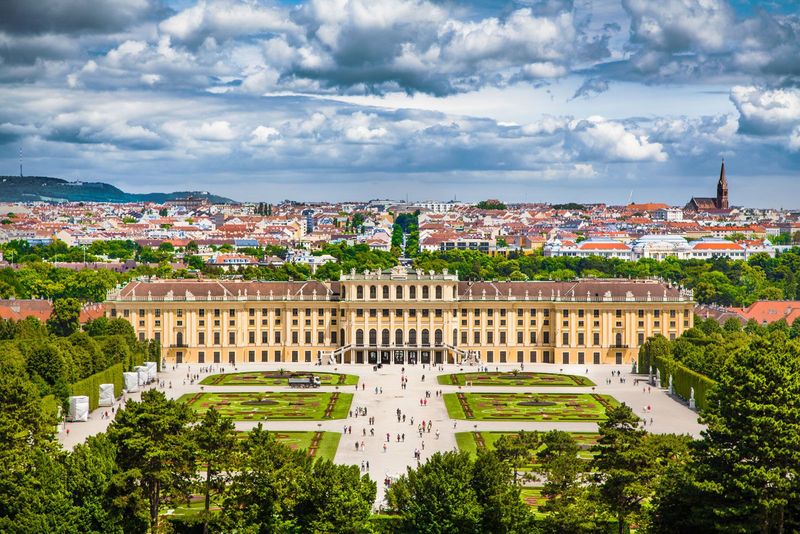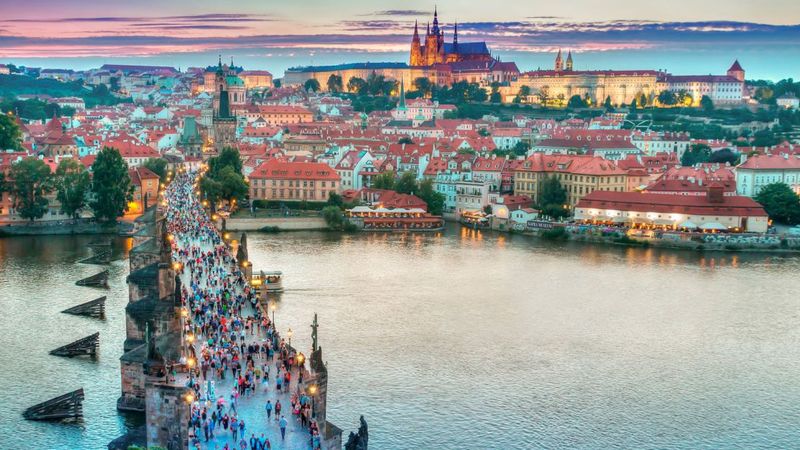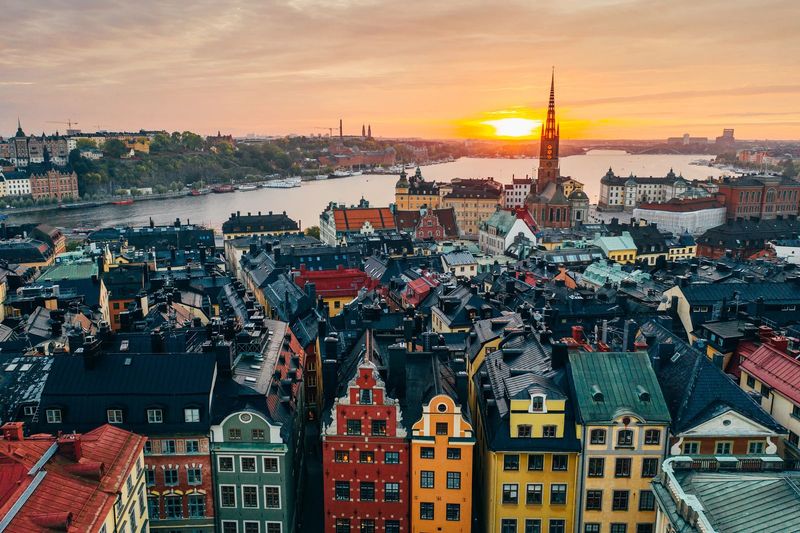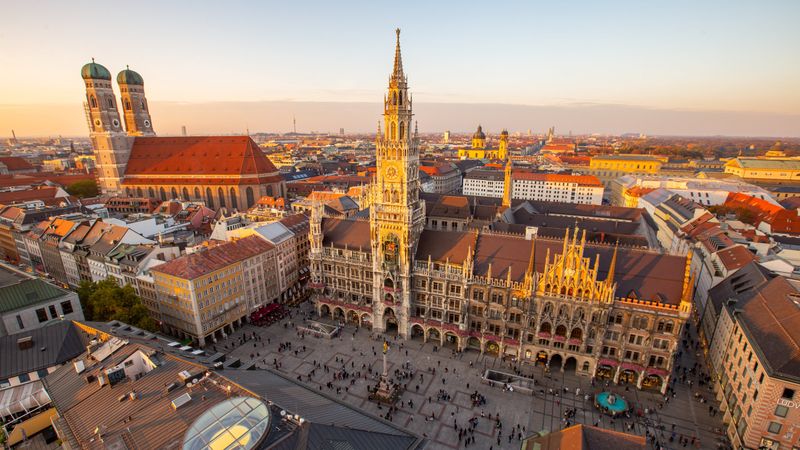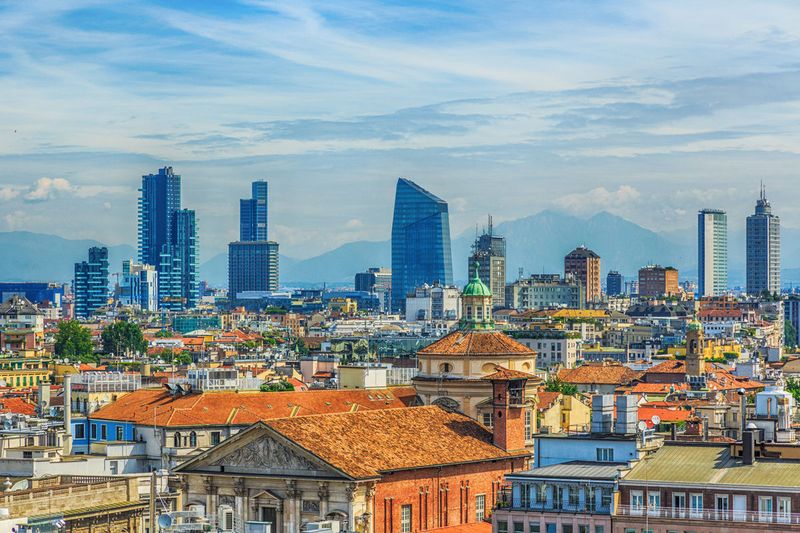Europe’s cities are having a moment like never before. From historic capitals reimagining their futures to innovation hubs drawing global talent, 2025 has crowned a new generation of urban champions. Whether it’s groundbreaking transit projects, sustainable transformations, or world-class culture that never stops evolving, these destinations prove that Europe remains the gold standard for city life.
1. London, United Kingdom
Nobody does it quite like London. This sprawling metropolis continues to dominate as Europe’s ultimate city, blending centuries-old traditions with cutting-edge innovation at every corner.
What makes London unstoppable? Start with its unmatched cultural scene, from West End theaters to world-famous museums that never charge admission. Add legendary parks like Hyde Park and Regent’s Park, where locals escape the urban buzz.
The nightlife pulses with energy across neighborhoods, while Heathrow and other airports connect you to virtually anywhere on the planet. Visitor numbers keep climbing because London delivers experiences you simply cannot find elsewhere. Its economy thrives, its diversity inspires, and its magnetic pull remains stronger than ever heading into the future.
2. Paris, France
Fresh energy radiates through Paris after hosting the world during the Olympics. That global spotlight didn’t just fade; it supercharged the city’s already ambitious plans.
Bikeability has exploded across arrondissements, making two-wheeled exploration easier than ever before. The Grand Paris Express transit expansion promises to revolutionize how millions move through the region. Meanwhile, the Louvre, Musée d’Orsay, and countless other institutions continue their reign as museum royalty.
Architectural landmarks from the Eiffel Tower to Notre-Dame restoration keep tourists spellbound. Cafés spill onto sidewalks where conversations flow as freely as the wine. Paris proves that even ancient cities can reinvent themselves while honoring every beautiful layer of their past.
3. Berlin, Germany
Raw creativity meets serious economic power in Germany’s capital. Berlin has never played by traditional rules, and that rebellious spirit fuels its 2025 success.
Museum Island alone houses treasures that rival any collection worldwide. After dark, the city transforms into a legendary nightlife playground where techno beats pulse until sunrise. Festivals celebrating everything from film to food pack the calendar year-round.
What’s changing the game now? Major innovation investments, particularly in defense technology and startups, are flooding into Berlin’s business districts. The combination of affordable living, creative freedom, and growing economic muscle creates an irresistible formula. Young professionals and artists alike flock here, knowing Berlin lets them build the future on their own terms.
4. Barcelona, Spain
Imagine a city where cars take a backseat to people. Barcelona has embraced pedestrian-first design with a passion that transforms daily life into something special.
Stroll through superblocks where neighborhood plazas replace traffic jams. When you need a break, sandy Mediterranean beaches wait just minutes away. Gaudí’s architectural masterpieces, from Sagrada Família to Park Güell, create a dreamlike backdrop that cameras can never quite capture accurately.
The events calendar overflows with conferences, concerts, and cultural happenings that draw international crowds. Catalan pride infuses everything from food markets to street festivals. Barcelona figured out how cities should feel: walkable, beautiful, alive with possibility, and designed for humans rather than vehicles.
5. Rome, Italy
Eternal hardly begins to describe Rome’s grip on our imagination. Every cobblestone whispers stories spanning millennia, yet this ancient wonder keeps evolving.
The Jubilee year brought sweeping upgrades to infrastructure and public spaces. Museums and archaeological sites that already ranked among the world’s finest received fresh investments. Walkability improvements mean exploring from the Colosseum to the Trevi Fountain feels less chaotic and more magical.
Trattorias serve pasta perfected over generations while gelato shops tempt you at every corner. Vatican City’s artistic treasures could occupy weeks of exploration alone. Rome reminds us that cities built on extraordinary foundations can honor their past while embracing necessary change for millions of modern pilgrims.
6. Madrid, Spain
Green infrastructure is rewriting Madrid’s story. The Santander Park corridor represents just one ambitious piece of an environmental transformation that’s turning heads across Europe.
Nuevo Norte regeneration projects are reshaping entire districts with sustainability at their core. Tree-canopied boulevards provide shade during scorching summers while reducing urban heat. Public transit expansions make car ownership increasingly optional.
Madrid’s museums, from the Prado to Reina Sofía, anchor a cultural scene that rivals any capital. Tapas bars and late-night dining reflect the Spanish approach to savoring life. What sets Madrid apart now is how it’s building tomorrow’s green city without sacrificing the warmth and energy that make it unmistakably Spanish today.
7. Amsterdam, Netherlands
Canal-side beauty meets serious livability in the Netherlands’ crown jewel. Amsterdam has sharpened its focus on making life better for actual residents, not just Instagram tourists.
Those famous waterways wind through neighborhoods where quality-of-life initiatives prioritize locals first. Cultural institutions from the Rijksmuseum to cutting-edge galleries feed curious minds. Meanwhile, the business ecosystem thrives with startups and established companies attracted by talent and infrastructure.
Cycling isn’t just transportation here; it’s a way of life that keeps the city human-scaled and accessible. Balancing tourism pressures with resident needs remains an ongoing challenge. Yet Amsterdam proves that historic cities can protect their soul while adapting to modern demands and maintaining their position as European leaders.
8. Vienna, Austria
Consistently ranked among the world’s most livable cities, Vienna makes urban excellence look effortless. But behind that elegance lies deliberate planning and investment in what matters most.
Public housing programs ensure affordability across income levels. Transit networks move millions efficiently while cycling infrastructure expands annually. Climate neutrality targets aren’t just talk; they’re driving real investment into green technology and sustainable development.
Culturally, Vienna punches far above its size with opera houses, concert halls, and museums that define European sophistication. Coffeehouses preserve traditions dating back centuries. The Austrian capital demonstrates that livability, culture, and environmental ambition can coexist beautifully when cities commit to balancing all three priorities with intelligence and care.
9. Prague, Czechia
Fairy-tale architecture meets practical urban transformation along the Vltava River. Prague’s compact size makes it wonderfully walkable, yet the city refuses to rest on its medieval charm alone.
Museum collections span centuries of Central European history and art. Public spaces are being reimagined to serve residents better, not just tourists snapping photos of the Astronomical Clock. Riverside areas now feature improved pedestrian access and gathering spots where locals actually want to spend time.
Affordability compared to Western European capitals attracts young professionals and creatives. Beer culture here is serious business, with pub traditions running deep. Prague shows how cities can preserve their storybook appeal while evolving into more resident-friendly, functional spaces that honor both history and contemporary needs.
10. Stockholm, Sweden
Built across 14 islands where Lake Mälaren meets the Baltic Sea, Stockholm blends natural beauty with Nordic innovation. Green space isn’t an afterthought here; it’s woven into the urban fabric.
Tech companies thrive thanks to world-class digital infrastructure that supports everything from startups to global giants. Nordic design principles influence architecture, interiors, and daily life with clean lines and functional elegance. Parks and waterfront areas provide year-round recreation despite the northern climate.
The Swedish approach to work-life balance isn’t just policy; it’s practiced culture. Museums and galleries showcase both Viking heritage and contemporary art. Stockholm proves that cities can be both economically dynamic and deeply connected to nature, creating an environment where innovation and quality of life reinforce each other.
11. Lisbon, Portugal
Sunshine practically defines Lisbon’s personality. This hilly coastal capital combines stunning tiles, rattling trams, and a cultural renaissance that’s captured global attention.
Atlantic beaches lie within easy reach for weekend escapes. The food scene celebrates fresh seafood and pastéis de nata that inspire near-religious devotion. Museums and galleries have multiplied, while music venues keep fado traditions alive alongside modern sounds.
Record visitor demand reflects Lisbon’s magnetic appeal, though locals worry about overtourism’s impact. Nature access from urban parks to nearby Sintra provides breathing room. The Portuguese capital proves that cities blessed with natural advantages, sunshine, sea, dramatic topography, can leverage those gifts while building vibrant contemporary culture that resonates far beyond their coastlines.
12. Munich, Germany
Where else can you find world-famous beer festivals alongside cutting-edge biotech research? Munich balances celebration with serious economic muscle in a way only Bavaria could pull off.
Oktoberfest draws millions annually, but the party spirit extends to beer gardens and cultural festivals year-round. Manufacturing powerhouses, especially automotive giants, anchor the economy. Meanwhile, information technology and biotechnology sectors grow rapidly, supported by top-tier universities producing talent.
The Alps loom tantalizingly close for weekend adventures. Museums preserve everything from science to art history. Munich demonstrates that cities don’t need to choose between tradition and innovation, between Lederhosen and laboratories. They can embrace both identities fully, creating economic dynamism while maintaining cultural traditions that make life genuinely enjoyable.
13. Oslo, Norway
Clean air quality in a capital city? Oslo makes it look normal. This compact Norwegian dynamo combines environmental consciousness with cultural ambition and economic strength.
New waterfront museums, including the stunning Opera House and Munch Museum, have transformed the harbor district. High labor-force participation rates reflect an economy that works for most residents. Fjords and forests surround the city, making nature accessible within minutes.
Electric vehicles dominate the streets, part of Norway’s aggressive climate goals. Winter sports facilities serve a population that embraces outdoor life regardless of temperature. Oslo shows how smaller capitals can punch above their weight by focusing on quality over quantity, creating environments where residents thrive economically, culturally, and environmentally without the overwhelming scale of megacities.
14. Copenhagen, Denmark
Bikes outnumber cars in Denmark’s capital, and that’s exactly how locals prefer it. Copenhagen has become the poster child for sustainable urban living without sacrificing style or economic vitality.
Cycling infrastructure reaches nearly every corner, making two-wheeled commuting the easiest option. Design excellence, from furniture to architecture, reflects Danish priorities of beauty and function. Carbon neutrality targets drive major waterfront resilience projects preparing for climate challenges ahead.
The food scene punches well above the city’s size, with innovative restaurants earning global acclaim. Parks and public spaces encourage social interaction and outdoor living. Copenhagen demonstrates that environmental ambition and quality of life aren’t competing goals. They’re complementary forces that, when pursued together intelligently, create cities where people genuinely want to live.
15. Milan, Italy
Fashion capital meets financial powerhouse in Italy’s most forward-looking city. Milan has never been content resting on its considerable laurels, constantly pushing into new territories.
Innovation districts are sprouting across former industrial zones, attracting tech companies and startups. Cultural institutions, from La Scala opera house to contemporary art spaces, continue reopening after major renovations. Fashion weeks still set global trends while luxury shopping districts maintain their magnetic pull.
The Duomo remains breathtaking, but Milan’s energy comes from ambition rather than nostalgia. Finance and business services drive serious economic activity. This is Italy’s engine room, proving that Italian cities can honor design heritage and dolce vita while building innovation economies that compete with anywhere in Europe or beyond.
